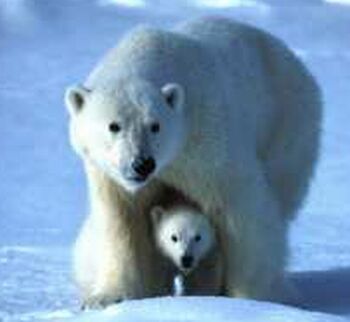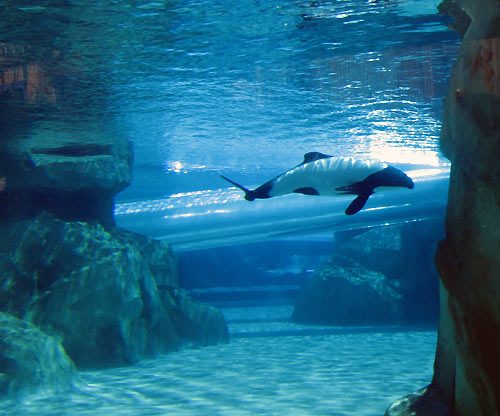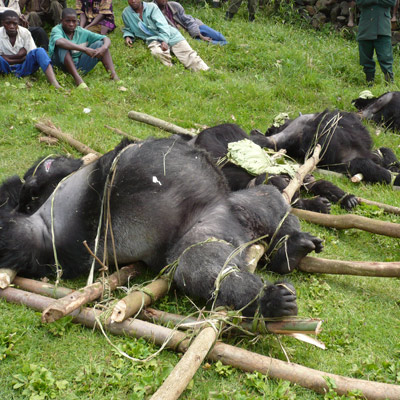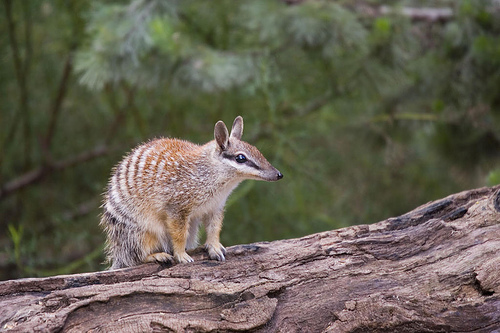An animal does not become endangered by accident. There are very specific actions that can cause an animal population to decrease, virtually all of which are related to humans.
You should adopt animal too I am currently adopting a polar bear and my sister is adopting a dolphin.
As almost everyone knows, to become extinct means to be gone forever. Even before man's arrival on Earth, species became quite naturally. Natural extinction happens when a species declines in numbers gradually but steadily at the end of its evolutionary period on Earth. The length of this period depends on how well a species can adapt to changes in climate and changes in other animals and plants around it. This procces of extinction can take a very long time- sometimes several million years- and the extinction of one species is immediatley followed by the appearance of another in a continuous cycle.
The case of the dinosaurs is the most well- known example of natural extinction. These reptiles appeared on Earth about 200 million years ago and dominated both land and sea for almost 100 million years. It is not certain why the dinosaurs became extinct, but their disappearance was a natural one and new species of animals evolved to replace them.
 |  |
 |  |
 |  |
 |  |
 |  |
Panda' bears, cute and adorable, are on the endangered species list. Their habitat, extremely limited diet and poor reproductive and infant survival combine to extremely threaten their survival. There are two kinds of Pandas. The giant white and black ones as we know, but there is also a red Panda which is also called the lesser panda.
Endangered Dolphins are not something we hear about very often. Since tune became dolphin friendly the number of dolphins being killed in the wild went down, so the plight of endangered dolphins around the world seems to have taken a back seat.
Unfortunately, there are at least 6 species of dolphins that are endangered, and one is probably extinct. The Baiji or Yangtze river dolphin, native to the Yangtze river in China, has not been recently spotted in the wild, despite attempts of researchers.
Other endangered dolphins include:
Amazon River Dolphin, a species of river dolphin that is threatened by development and mans invasion of the areas in and around the Amazon river.
Chinese white dolphin, also called Indio-Pacific Humpack dolphin or Pink dolphin, seriously threatened by industrial expansion into the waters around Hong Kong.
Hectors dolphins, which are one of the smallest and rarest species of dolphin. They are found off the coast of New Zealand.
Indus river dolphin, which is native to Pakistan.
Fishing nets. Despite efforts to alleviate this problem, dolphins still get caught in the nets used by commercial fishing boats. Though this issue may have been solved in the United States, it remains a problem in other countries.
Overfishing. Even though dolphins are protected by law, they are still caught for food in some regions of the world to such and extent that their populations are threatened.
Pollution. This is one of the biggest problems facing many animals in the wild. Pollution is especially dangerous to dolphins because they are at the top of the food chain. That means that they are affected by pollutants in their enviroment as well as in the fish they eat.
Polar Bears are now on the threatend species list due to global warming.
With the recent news of global warming, and the statements that the polar bear is the first animal to become endangered because of global warming many people are wondering how many polar bears there are. That is a question that the answer is still being researched. No one really knows how many polar bears there are because their hard to count, and at times hard to find. Researchers estimate that there are between 22000 and 40000 polar bears in the world. Close to half of the polar bear population lives in Canada.
Though the tiger is one of the most powerful mammal, it also faces the worst chances of being extinct.
Tigers have been hunted heavily by humans over the past few years. The tiger population in the Indian sub-continent has declined seriously in the past fifty years. Nepal has only 200 tigers, while India has about 4000, a serious decline from the past figures. China and Korea are the biggest criminals as far as tiger poaching is concerned. In the nineteen hundereds, the entire tiger population was more than one lakh. However today the global tiger population is less than ten thousand animals.
Mountain Gorilla , the Virunga volcanoes region in eastern Zair, Rwanda and Uganda is the only home of the highly endangered mountain gorilla. It depends on dense forests for survival and these are steadily being cut down to make way for crop growing and livestock grazing. The gorilla is protected by law, but despite this, some of its so-called sanctuaries have been cleared, and hunters kill them for food and trophies.
The Jackass penguin is the only penguin to be found in africa, and it was once the country's most common sea-bird. It lives off the coast of Namibia and South Africa, and the waters here have been over-fished by humans, depriving the birds of their food supply. Oil pollution also threatens them, as does the taking of their eggs or food.
The largest animal to ever have lived on our planet, the blue whale, lives mainly in the cold waters of the Arctic and Antartic, where it finds enough plankton to sustain it. It migrates to tropical seas to breed. The blue whale has been a protected species since 1966, but thousands were killed up until then. During the whailing season of 1930 to 1931 alone, 30,000 blue whales were killed by Antarctic whalers. Although their numbers have increased a little, there a probably less than 6,00 alive today. It will take more than one hundred years of protection before we can be sure that it will not become extinct.
Sometimes called the banded anteater, the numbat was once common in the bush and forest of north-eastern and southern Australia. It is now only found in the most western part of eastern Australia. When man introduced predatory animals such as cats, dogs and foxes, these animals ate many numbats. There numbers are declining because their habitat is being cleared for farming and mining.
The Komodo dragon is the largest lizard in the world and lives on a few Indonesian islands. It is a powerful predator and can measure as much as 3 metres in length. There are about 3,00 Komodo dragons in total, but they seem to be slowly declining. They live mainly on uninhabited islands, so are in no great danger from humans. Scientists think that natural causes are to blame. There are more males than females alive, and also the natural plant life seems to be changing and the lizards are not adapting well to their new environment.
Golden Lion Tamarin. This tiny monkey is on eof the most endangered of all animals in south America. The few that are left, about 150, are restricted to the only remaining coastal rainforest, south west of Rio de Janeiro, Brazil. Forest destruction is the main reasonfor the tamarins decline, but it is also in danger of being capturedalive and sold as a pet, a strictly illegal practice which still goes on in secret.